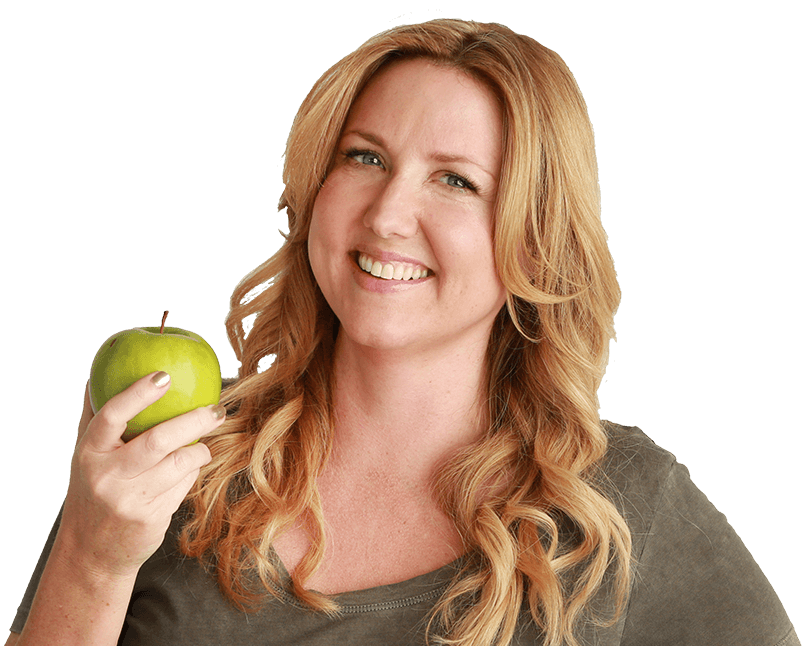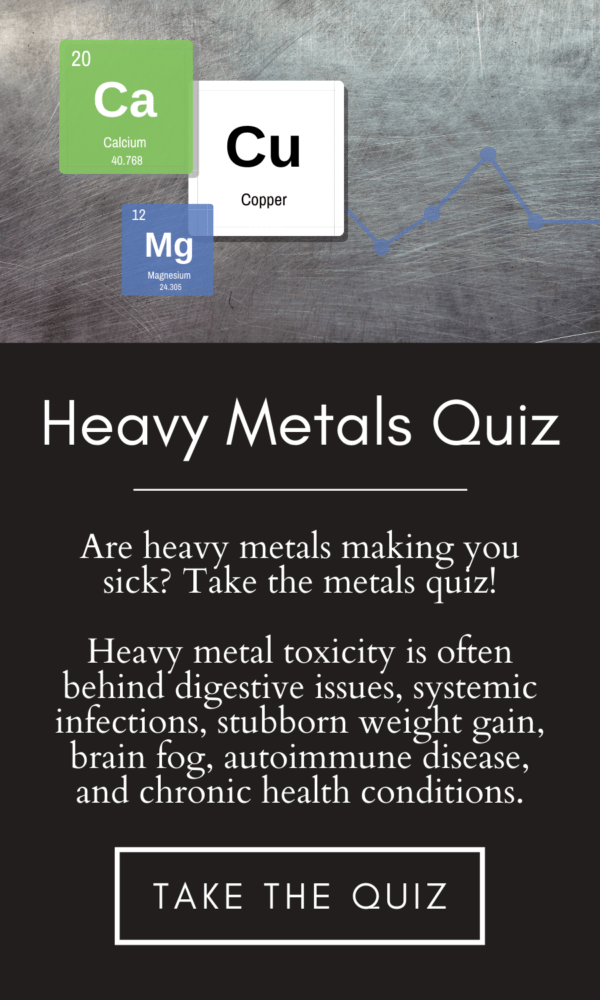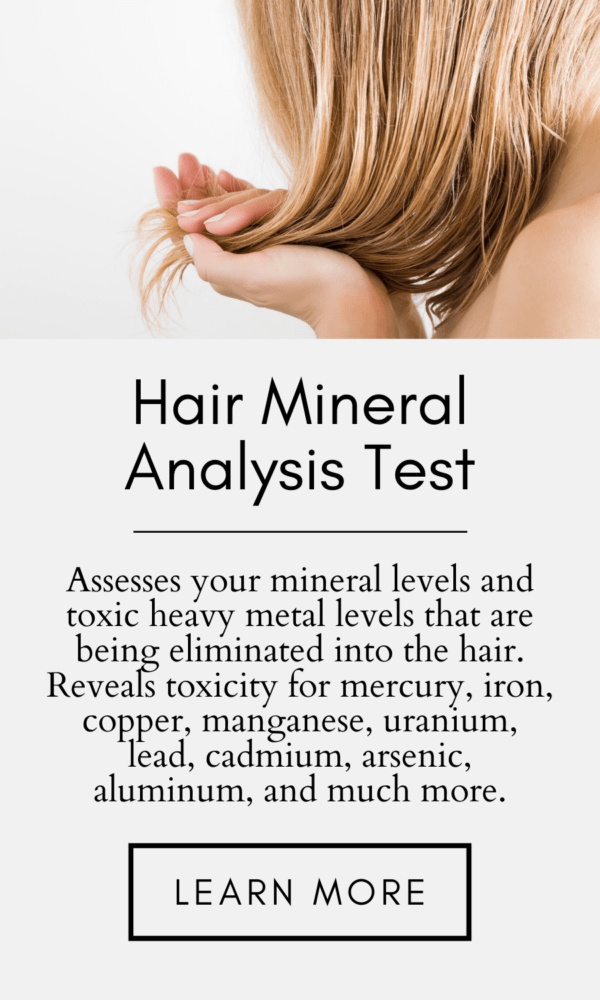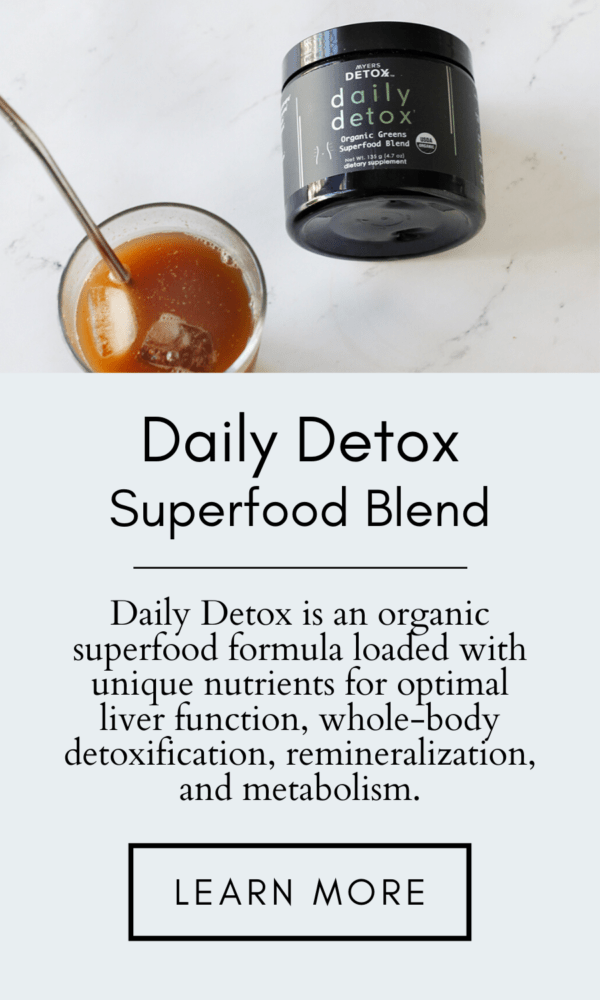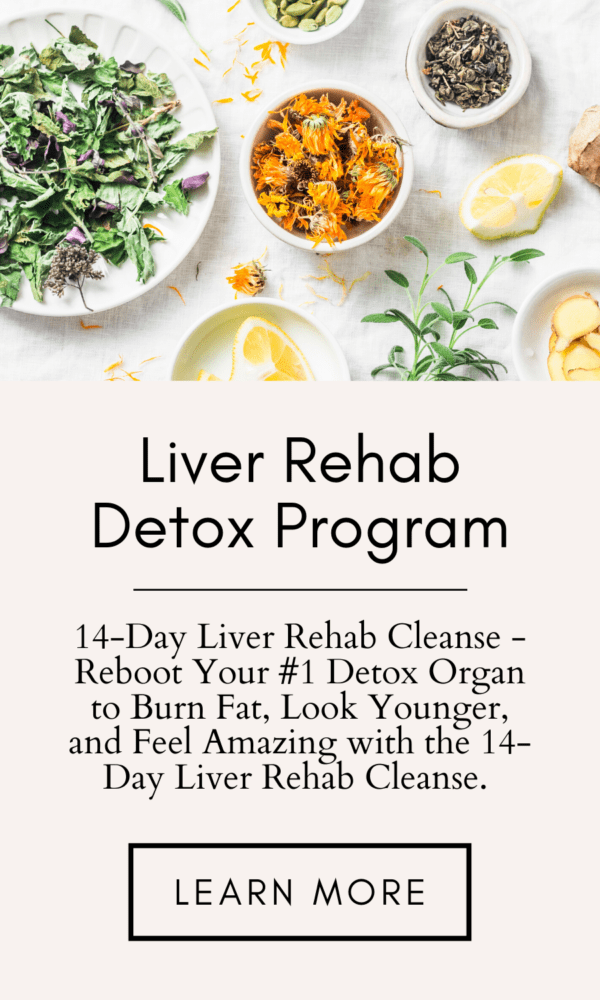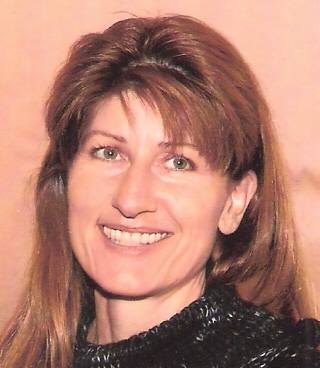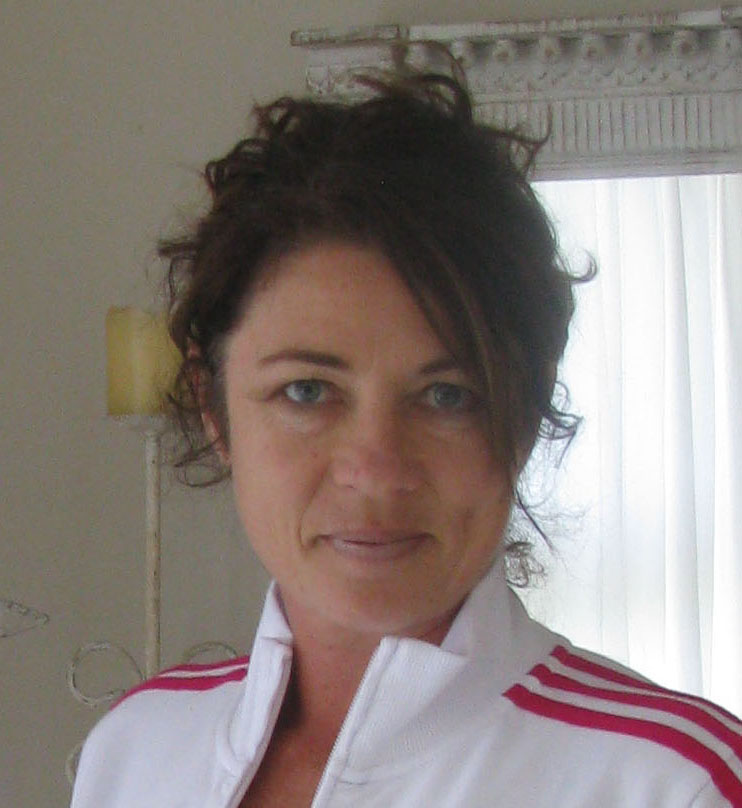Transcript #435 Mold Removal vs. Mold Remediation with Michael Rubino
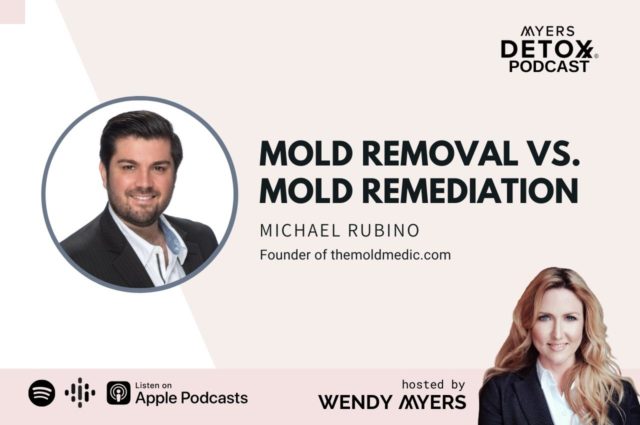
Listen
Listen to this podcast or watch the video. CLICK HERE
Transcript
Download PDF
Click to jump to a section!
- Find out what’s in store on this Myers Detox Podcast with Michael Rubino, who joins the show to talk about how to do proper mold remediation, the difference between mold removal and remediation. Michael also goes into problems with mold testing, differences between mold and mildew, simple steps to prevent mold growth, symptoms of mold toxicity, and much more! If you have an old home, a home that may have had water damage, or even a new home, mold growth is something you should have on your radar, so tune into this informative podcast!
- Find out what caused Michael to become an expert on mold.
- Learn about some of the most common molds Michael finds in homes.
- Learn more about how mildew is actually just a form of mold.
- Learn about the main symptoms of mold toxicity.
- Find out what’s wrong with current mold testing and remediation practices and what Michael would like to see happen in the future.
- Find out what percentage of homes likely have a mold problem.
- Michael recommends getting a mold inspection in tandem with a house inspection. Learn more.
- Learn about how Michael recommends going about doing a proper mold remediation.
- Learn about the main steps you can take to prevent mold growth in your home.
- Find out how Michael hopes to change the way we approach mold for future generations.
- Read Michael’s final thoughts and where you can learn more about his book The Mold Medic: An Expert’s Guide on Mold Removal and his mold remediation services.
Dr. Wendy Myers: Hi, everyone. I’m Dr. Wendy Myers. Welcome to the Myers Detox Podcast. I’m the founder of myersdetox.com. You can go there and sign up for my newsletter. I give you all the latest tips and tricks and health hacks on how to detox your body and dramatically improve your life, and that’s what this podcast is all about.
Dr. Wendy Myers: Today we have Michael Rubino on the show. He’s the Mold Medic, and we’re going to be talking about how to remediate your home. We’re talking about mold removal versus mold remediation, the difference between mold and mildew. We talk about the problems with testing, the problems with doctors figuring out if mold is at the source of your symptoms and your health issues, and what mold illness looks like. We talk a lot about the environment that fosters mold growth and some simple tips that you can use in your home to prevent mold growth as well. So, lots of really good education. Fantastic show.
Dr. Wendy Myers: And Michael Rubino he’s an air quality expert who helps bridge the gap between the air in our homes and its direct impact on our health. Rubino has worked with over 100 doctors globally to not only raise awareness but also provide solutions to correctly identify and remove the pollutants causing this global health crisis that we’ve found ourselves in.
Dr. Wendy Myers: As president of allamericanrestoration.com, Rubino specializes in working with people who are immunocompromised or have acute and sustained reactions to mold exposure. He’s helped heal over 1000 families from mold illness, including celebrities and athletes. He’s also a council-certified Mold Remediator by IICRC and ACAC and is a contributing member, sponsor, and speaker for the Indoor Air Quality Association. He’s also the author of The Mold Medic and a contributor to mindbodygreen. He’s also been featured on Gwyneth Paltrow’s The Goop Podcast and Goop’s website and Brandi Glanville’s Unfiltered Podcast, Luke Storey, Forbes, USA Today, and many others, just to name a few. He also hosts the YouTube series, Mold Talks, where guests include medical experts as well as mold recovery patients. And you can also learn more about Michael and his work at themoldmedic.com. Michael, thanks so much for coming on the show.
Michael Rubino: Thank you so much for having me.
Dr. Wendy Myers: So, tell us a little bit about yourself and how you got into becoming a mold expert.
Michael Rubino: Yeah, good question. So my dad is a contractor himself, been a contractor since I’m five. So, I’m technically a second-generation restoration contractor. And really, I think when I really got interested in this whole thing was after Hurricane Sandy hit the Northeast. Originally from the New Jersey and New York area, and when I started really seeing people impacted by this on a larger scale, I started seeing patterns of people getting ill in their own homes. And that’s when I started to build a passion around this because I realized that there were a lot of missing links within the remediation industry that were just missing the mark entirely from a scientific perspective, which obviously led to this health decline that I was seeing. So, that’s when I really started to become passionate about it, really dive in, try to figure things out, and create new processes around what we’re doing in people’s homes.
Dr. Wendy Myers: Okay, great. And so what is the most common problem you see in people’s homes? Like what type of mold, and how are you detecting this?
Michael Rubino: So, some of the biggest issues we see are Chaetomium, which is a specific type of mold. It’s a toxigenic mold that produces Mycotoxin. Same thing with Stachybotrys. I think that’s the one mold that everyone tends to know. It’s the toxic black mold that you hear about. Yeah. You have aspergillus, which is an interesting one because it’s typically lighter in color and people often mistake it for mildew. Then you have Penicillium, which is typically identified, grouped together with aspergillus. You also have Cladosporium, which is something that I see pretty prevalent in people’s homes. I’m sure I’m missing a few, but those are pretty much the big ones that we see time and time again that can severely impact people’s health.
Dr. Wendy Myers: Okay, great. And what is the difference between mildew and mold?
Michael Rubino: So, really, there is none. I’ll tell you how the term mildew came about. Mildew came about off of a term called powdery mildew, which is a fungus that grows on a plant. If you dive into what powdery mildew is, it’s a fungus from the Ascomycota kingdom. And so, mildew is basically a mold from the Ascomycota kingdom. What’s interesting is that Aspergillus is also from the Ascomycota kingdom. And so what I think happens is people misconfuse the term mildew as this term meaning, oh, it’s not mold yet, it’s this mildew thing. But the reality of it is when you’re looking at mildew in your home, it’s typically just mold.
Dr. Wendy Myers: Yeah. And so when people have mold illness, or they’re dealing with mycotoxins which are the toxins that are put off by mold, what are some of the symptoms that they’re having, and what health consequences can that have?
Michael Rubino: It’s different for everybody. I think we learned with COVID, people react differently to different things, right? So, when it comes down to mold exposure, we see things like brain fog, chronic fatigue, skin hives, rashes, and eczema. We see hormone disruption and infertility. We’ve had clients that have had coincidental miscarriages after being exposed to mold. So, there are also studies talking about autism and the effects that autism has on mold. We also know that people that have Lyme disease and other autoimmune disorders and co-infections get severely impacted by mold. In general, it’s hard to heal, no matter what ailment you have, when you’re constantly dealing with exposure.
Dr. Wendy Myers: Yeah. That could be anything, as soon as you can describe, and I’m sure people are going to their doctor, and the last thing that they’re uncovering is mold. After they’ve probably been through years of testing and different doctors and the revolving door that many people go through to finally get the correct diagnosis.
Michael Rubino: Yeah. Literally, the last thing, if at all. It’s really sad in that sense because for so many people, when I’m talking to them, they’ve been struggling for years, and they’ve had this health decline. They had no idea what was going on. They run all these tests, go to all these different doctors. The doctors are saying, “Everything looks normal. I have no idea what’s wrong with you.” And finally, they find somebody who says, “Hey, you should probably check your home. This sounds odd.” They check their home and find high levels of mold and high levels of bacteria, all from these water damage events, most of which were hidden that they had no idea. There were no signs of it. And so it takes scientifically figuring out what’s going on inside the environment, how to fix it, and then go from there.
Michael Rubino: But what’s interesting is we honestly don’t know enough about this stuff. There’s 200 studies about it, but there’s nothing that’s really concrete yet. I think we’re at the infancy of this thing. When I look at this, I have no idea how it impacts otherwise healthy individuals. And I can use myself as that story point because I don’t have Lyme disease, I don’t have an autoimmune disease, I don’t have any co-infections that I’m aware of anyway. And when I have been in this industry for so long, I would say that it was about a 10-year slow health decline to where all of a sudden, no matter what I’m eating, I’m gaining weight, I’m not sleeping as well, I don’t have as much energy.
Michael Rubino: And so, when I look back, I just used to say, “Well, I’m getting older. My body’s changing. This is normal. I’m a dad now.” These are all the things that I told myself. But the reality of it is when I started detoxing, and I started going through the same protocols that many do, all of a sudden, I’m able to lose 30 pounds, I’m sleeping better, and I have more energy. I feel the way I probably should feel. And so, when I look at this, I really have to say that this is going to be very interesting over the next few years, as we continue to study this and see really what the impacts are. I think they’re probably a lot greater than we currently know about.
Dr. Wendy Myers: Yeah. And so, I’ve heard that some of the testings for mold, even though people like call out the mold remediation specialist, that the person coming to their home may not be doing the right tests or not being able to find out what’s actually going on because the there’s a lot of complexity, and we’re in our infancy. I think that the detection of mold could certainly be much better.
Michael Rubino: Oh yeah. So, the unfortunate part about it is the standards are not so standardized. What we have is we have people that go into people’s homes, and they just want to do air testing, or they just want to do visual inspections. It’s like going to a doctor and saying, “I don’t feel well,” and the doctor’s like, “We’re going to check your vitamin D levels.” There are so many other things to check for. And there are so many technologies available now to identify mold exposures and bacterial exposures inside people’s homes. And I think that we really need to modernize things because a lot of the practices out in the field are very antiquated. There’s a test that I’m developing called the dust test. And what’s interesting about this and why I think that people listening will like this is because we actually want to take the process and reverse it.
Michael Rubino: Right now, you call an inspector, they come in, they do some samples. Maybe they test the dust for certain toxins, molds, bacteria, et cetera. But by that point, by the time you get the results, they’re already long gone. And if they didn’t do a good job with the source testing, or maybe there were some things that they just couldn’t physically see, you may miss certain sources. And if you miss certain sources, I don’t care if you have the best remediator on the planet; they’re not going to be able to remediate your home successfully. And you’ll likely still feel like there’s mold there or bacteria there when they’re gone and done. So, what’s nice about starting with the dust first is it tells you what’s in your environment. You’ll be able to actually speciate which species are elevated. Then you give that to your inspection company. You say, “Find where these are coming from.”
Michael Rubino: Because you have sources creating these particles, creating these toxins. Let’s find the source of where that’s happening. Then you have a good remediation plan. Now you can hire a remediator who can remediate properly, and then you want to clean the home thereafter because here’s the other big mistake in remediation. They’re cleaning up maybe the sources, but they’re leaving all the particles and toxins in your home for you to keep being exposed to. And so that’s another big reason remediations fail or people don’t feel well after remediation, or even feel worse after remediation because they’ve exacerbated this, moved things around, and didn’t clean it up. So, it’s really important to look at this scientifically and say, “How do we identify what I’m being exposed to? How do we then identify where it’s coming from and eradicate that? And then let’s remove the particles and the toxins that have been created as long as those sources have been there.”
Dr. Wendy Myers: And what, in your estimation, is the percentage of homes that have mold? Because I assume it’s going to be really, really high given the age of most homes, given the fact that most people live in a human environment, at least part of the time and the South the majority of the time. You put a piece of wet bread in a plastic bag. It’s probably going to grow mold if the conditions are there. So, what are your thoughts on that?
Michael Rubino: We’ll start with a study. So based on the largest home study ever done in 1994 by John Spangler, he found that 50% of homes had water damage or visible water damage. 80% of those homes had visible signs of mold growth. So, that’s visible. A lot of the problems are what we can’t see. I’ve been in homes where you had no visible signs of water damage or mold growth. But yet, when you analyze the labs of what’s there, you’re picking it up and picking up good amounts of it.
Michael Rubino: So, what’s really interesting is I think that number is much higher. I don’t have an exact figure. If you wanted me to speculate, I’d say 75 to 80% of the homes have water damage issues out there. And I think that it’s like finding a needle in a haystack currently to find a home that doesn’t have issues. Even new construction homes have mold problems and bacteria problems, just the way in which we’re building them. We’re not very mindful of these things. There’s not one builder in the United States that’s required to understand mold and bacteria as part of the process. We probably should look at that, by the way, because I think if we can stop the problem from occurring, it’s going to take education.
Dr. Wendy Myers: Certainly, building drywall probably doesn’t help. I guess it’s just so prone to mold growth, especially when it’s used in bathrooms and kitchens.
Michael Rubino: Totally.
Dr. Wendy Myers: So, if someone’s buying a home, is it necessary to do, I mean, obviously, do you recommend doing a mold inspection as well as a regular house inspection?
Michael Rubino: Well, so put it this way. A home inspection course, I think it’s 300 and something pages. There are only one or two pages dedicated to mold. So, it’s not a large part of the home inspection process. I would expect that unless the home inspection service company is also a mold specialist, the odds are that they’re going to miss things when it comes to mold, bacteria, and water damage in our homes. And so, if you’re someone who’s really concerned about this, which I think we all need to be more concerned about, so we can have air quality as a bigger part of our health program here, I think that you’re going to want to probably get a mold inspection in tandem with the home inspection because it’s going to give you the data, especially because most home inspectors if they’re looking at mold, they’re looking at it visually. They’re not going to do testing typically. So, I think it’s really important to do the test.
Michael Rubino: One of the best things that I think you can do for a home is testing the dust, looking at it like an ERMI, utilizing MSQPCR technology to identify what’s there is a good way to start. Because if you start seeing specific species that are highly elevated, odds are there’s a source somewhere producing those particles. That can give you a clue as to whether I should buy this home. At the end of the day, it’s like picking your poison. We talked earlier about 80% of homes probably have water damage. We know that for sure 50%, based on the study in 1994. So, that gives you more of a crapshoot in finding something that doesn’t. So, it’s more of picking your battle and choosing your battle. Knowing that if this is something that is important to you, you’ll likely have to make some sort of improvement to the home. Finding these issues and fixing them before you move into them is probably a smart way to look at it.
Dr. Wendy Myers: Yeah. And I’ve heard that when people do mold remediation, that doesn’t completely solve the problem because you have the spores and you have the dust, and that’s all over your bed and your clothing and all over your furniture. And it’s actually that you just have to throw everything out and start fresh after you do mold remediation, or you move from a molding home to a new home?
Michael Rubino: There are a lot of variables in that question because, obviously, everybody’s built differently. Some people are going to be more sensitive than others. Everyone has a different emotional state, meaning that sometimes this can be such a traumatic experience that you’re always going to be wondering if your stuff is contaminated or not. And for your mental health sanity at that point, you’re better off starting over. In terms of how we can deal with this scientifically, there are solutions out there now that can help with some porous items, and that’s anything that fits into a washing machine that can be treated with something like Borax or EC3 Laundry Additive, as an example.
Michael Rubino: But when it comes to non porous items like glass, metal, and plastic, all of those can be safely decontaminated from mold and mycotoxins bacteria, et cetera. So, you have a lot of options. I typically tell people to start by doing everything that you can, cleaning everything you can. Finding the sources is the most important part because, without that, they’re going to continuously create these particles and toxins. You’re never going to get to a net zero like we’re not looking at mold-free homes. We’re just looking to remove the abundance. And right now, that’s typically the biggest problem: we have so many different sources in our home. Whether from when we owned the home, we thought we fixed it properly, but we didn’t, or maybe the previous homeowners thought they did a good job fixing things, but they didn’t. And so, typically, we have several different sources. Most of the homes that I visit have 10 to 15 different sources. So, it’s a lot to tackle at once.
Michael Rubino: So, what I always say is to look at it from a scientific perspective. Let’s tackle the areas creating the most impact, negatively, of course. Start there. Let’s clean the place up, clean your belongings and see how you feel. And there are different levels to this. So, if you need to go further, you can go further. But we’re seeing a good response from people who are taking this step-by-step approach. They’re feeling better, they’re getting these wins, and they’re making a decision on their own of how to move forward from there. So, I think that’s the way in which I like to look at it because I don’t want people so overwhelmed that they think that if they don’t throw everything out and burn the house down, they can never move on.
Dr. Wendy Myers: Yeah. Because that doesn’t seem realistic for most people to just throw everything out and start over. And especially the fact that I’ve heard from some mold experts or a couple of people that even a new home could begin growing mold even after a couple of years. So, people who are really sensitive to mold say, “I have to move to a brand new place, with new construction.” But even after a couple of years, because of the construction quality and no mindfulness to making it less mold-prone, people can just have the same problem all over again.
Michael Rubino: You’re totally right. We have to reframe the way we think about this. Instead of running from mold, it’s best to confront and tackle it to make the improvements that we need individually to feel better and to create a healthier environment. Because yes, where are you going to go? New homes can have mold. Even if they don’t have mold in a few years, there’s likely to have a leak. It’s really about educating yourself, understanding the science behind this, and knowing how to take action when you need to take action. Because, like I said, mold’s a part of our ecosystem. There’s really no running from it. But you can, and the nice thing about this is you can create a healthier environment. You can make it more difficult for mold to grow inside your home. And we do that with things like dehumidification systems, by doing annual inspections, making sure our doors, windows, roofs, et cetera, are in good shape, they’re not leaking.
Michael Rubino: And things that have subgrade spaces like crawl spaces, basements, things like that, improving them, waterproofing technologies, dehumidification systems, et cetera. We can control it. And if you can control it, that’s how you win against it. Because if you take away its ability to grow and it needs moisture and a food source, then again, it doesn’t have any ability to grow. And so, now the spores and the toxins are not accumulating in your environment because they’re not actively growing and reproducing.
Dr. Wendy Myers: And given all this, what you’ve talked about, what are some simple steps people can take to prevent mold growth in their home?
Michael Rubino: So, like I said, inspections are one thing. I want to harp on the importance of cleaning, routine cleaning. A lot of people don’t realize that there’s a lot more to our dust than we think. And we’re not just talking about dust mites, we’re talking about mold, we’re talking about bacteria, viruses, you name it. Everything in our environment, everything that’s in our bodies, does settle out in our dust. So, I think that cleaning and removing dust regularly is a really good way to keep your environment clean and free of these environmental pathogens. I think if we do that, that’s going to be something that’s going to make a big difference. And I mean cleaning, not just swishing a mop around on the floor. I mean, really removing the particles. And even once a month, making sure we’re cleaning things that we never clean, like the top of our kitchen cabinets, as a good example.
Michael Rubino: On top of that, we have to pay more attention to our HVAC systems. So, our HVAC systems are a big problem. And the reason being is because they have an evaporator coil that essentially condensates all the time, providing a nice wet environment for mold and bacteria to thrive. And so, one of the biggest challenges with HVAC systems is our HVAC filtration. Most of us, if you went over to your HVAC machine right now, you probably don’t have a great filter in place. You likely just got a standard one at Home Depot, or Lowe’s, or something like that can’t remove a small particle such as mold from getting to your unit.
Michael Rubino: So, what that means is mold’s bypassing these filters, they’re getting to the coil, and it’s providing them an opportunity to grow and colonize on the coil. And when it does that, it basically turns the HVAC system into a giant mold factory because the HVAC is like the lungs of our home. So, if we are more aware of that and we put better filters, there’s great technology out there to stop these smaller particles from getting to our units. If we do that, we’re also going to see massive differences.
Dr. Wendy Myers: Yeah. I know my old home, I would just turn on the heater, and you could just smell the mold coming out of it. It was a 100-year-old home as well. Yeah, it was definitely the HVAC system that wanted, begging for improvement. But I think that’s the case for a lot of people; they’re just not thinking about these simple things. And I think it’s also really important for people who have chronic fatigue or are ill. They can’t really figure out the source of their health issues, really to be looking at mold, where you’re living and what you can at least move to maybe even a drier environment, drier humidity, drier climate, like the desert, to help see if perhaps mold is one of your issues that’s promoting your illness.
Michael Rubino: Yeah, it’s very true. If you must live in a humid climate like me, I love Florida. That’s where I’m located. I just know that if I’m in a humid climate, it’s really important to make sure that I have good windows, that the windows are properly sealed, trying to keep that moisture out, that the HVAC is running properly, it’s properly filtered, and we have dehumidifiers, so we control that environment. Mold can start to grow in as little as 60% relative humidity or more. So, keeping it below 60% is going to be a successful action in making sure your home is not conducive for mold growth.
Michael Rubino: So, if you live in a dryer climate, there’s challenges there too. I’ve seen people make the opposite mistake where they’re adding too much humidity because it’s so dry. They want to have that comfortability. And they’re adding humidifiers all over their home and creating so much humidity that there’s literally water dripping off the walls. Comfortability is one thing that we’re always looking for no matter where we are. Just make sure that you’re mindful about humidity and moisture in your home, and I think you’ll be in good shape.
Dr. Wendy Myers: Given that there’s really little to no regulation as far as mold remediation standards nationwide, is there anything that we can do about making changes for future generations and the way we build homes?
Michael Rubino: Oh, absolutely. I’m writing an entire book about how to do just that. It starts with A, educating our builders. No one should be building homes in America or the world, for that matter, if they don’t understand microbiology. And I’m not talking about scientific level microbiology, but just the basic understanding of how mold and bacteria get in our homes, how important it is to dry our homes when we’re introducing building materials into the homes, and just making sure there’s a basic understanding of how to prevent these types of situations from happening. That’s going to go a long way. Right now, there is none of that. Obviously, the medical community has been amazing over the last 10 years in all the research that it’s been doing, really making sure that air quality is a little more well known than it has been.
Michael Rubino: But that’s just the tip of the iceberg. If you go to your primary care physician, odds are, I would say that they’re probably not going to think of mold when you talk about any elements that you have that could be related to it. So, I think more needs to be done there with mold being updated in the medical institutions. Obviously, insurance companies need to make some changes because there are a lot of limitations with mold regarding your home insurance. So, when you have a claim and stuff like that, there are typically limitations to how much can go towards mold remediation. That all needs to change.
Michael Rubino: The government is another thing. Mold is not classified as a health hazard in any state across the country. I know Australia, I don’t know if people have seen the news in Australia, but the medical community in Australia is pushing for updates to mold being a health hazard in Australia. So, the world is paying attention. Things are definitely changing in the right direction. It doesn’t move as quickly as we probably would all like. But the reality of the situation is there are some simple changes we can make and really just really simple, and not very costly either. And if we make these simple changes, we can really impact so many people that are suffering.
Dr. Wendy Myers: And so tell us about your website and what people can expect when they go there, what kind of services you offer, et cetera?
Michael Rubino: So, the main website for me is themoldmedic.com, off of the book. On there, you can find more information about me, what I’m doing to help people, and the book consultations and things like that. For our service, if you want to actually have your house remediated and you’re ready to take on that project, allamericanrestoration.com is a great resource for you. It has tons of information on how to do it, and it is a service we offer for those in need.
Dr. Wendy Myers: Yeah. And tell us about your books that you’ve written as well.
Michael Rubino: Well. So, the book that I wrote is called The Mold Medic: An Expert’s Guide on Mold Removal. And it’s. Basically, it starts off talking about the industry as a whole and gives a good example of why things need to change, and then dives into how do I remediate my home, why I want to look at remediation the way I look at remediation, how to find a good inspector, the different testing technologies available, all the different molds that typically inhabit people’s homes and what they mean, what they do, the different impacts, we talk about mycotoxins et cetera. It’s really a guidebook for those who are just starting out. Maybe they think they have mold, they’re not entirely sure, or maybe they know they have mold, but they have no idea where to go from there. This book will help with just that.
Dr. Wendy Myers: Fantastic. Well, thank you so much for coming on the show. Is there anything else that maybe we’ve left out of the conversation that you want to communicate to the listeners?
Michael Rubino: One last point is we take over 20,000 breaths per day. So, I want people to leave with that. It’s an enormous number. It’s something that we do not pay enough attention to. It’s one of the biggest ways that we’re exposed, as human beings, to everything out there in the world. So, I think it’s really important that we pay more attention to that. And it’s not just testing the air. I know that makes logical sense. But remember that what’s in our dust gets into our bodies. And so, we want to make sure we’re looking at a full picture when we’re looking at our home, and that full picture is going to be more successful when we’re trying to fix it. So, I leave you with that. Thank you so much for having me on the show, and hopefully, people listening have learned a lot.
Dr. Wendy Myers: Yeah. That totally makes sense, for sure. Michael, thanks so much for coming on the show. I just thank everyone for tuning in every week and listening to the Myers Detox Podcast. I love having all these world experts come on the show to help educate you to upgrade your life because you deserve to feel good. And I want to help you get to the source of why you may not be feeling as well as you deserve. So thanks for tuning in. I’m Dr. Wendy Myers of myersdetox.com, and I’ll talk to you guys next week.

